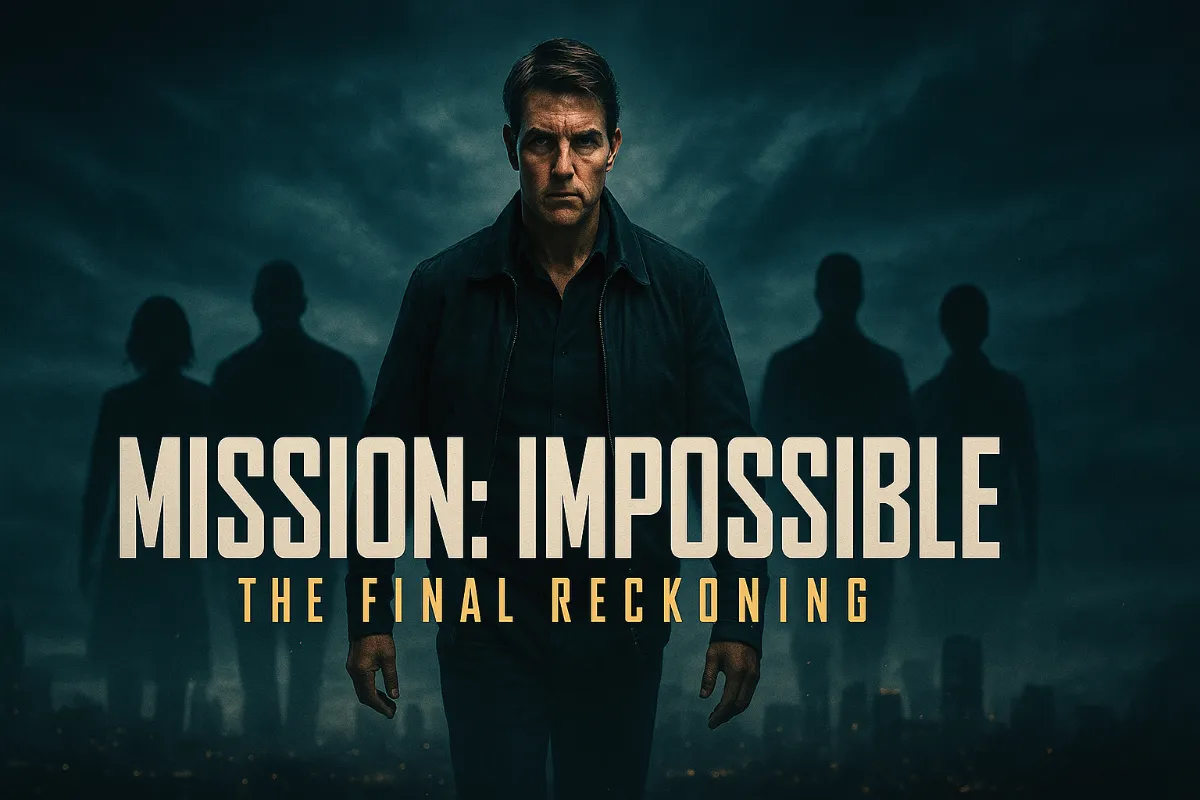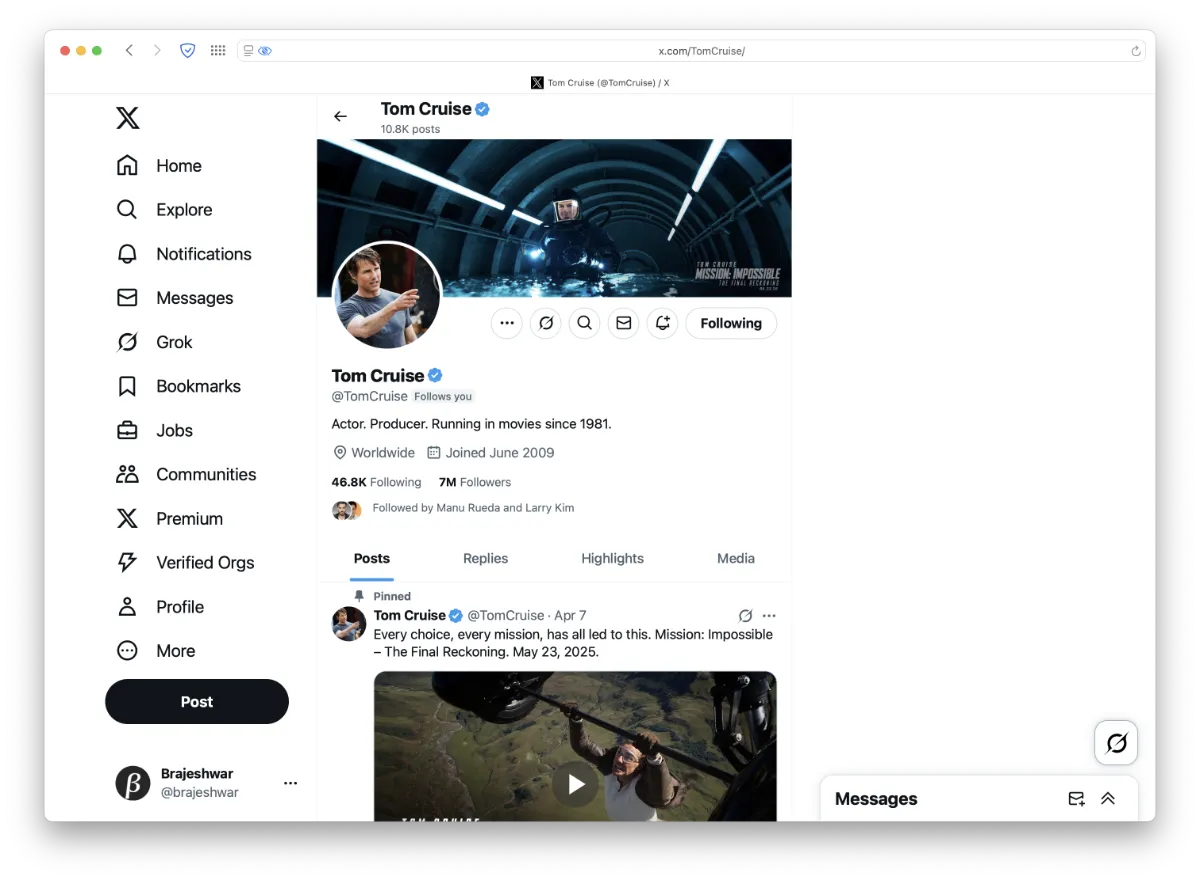Mission: Impossible - The Final Reckoning
2025-JUN: WARNING! CONTAIN SPOILERS
In a world increasingly shaped by AI (Artificial Intelligence), Mission Impossible reflects our collective anxieties and aspirations surrounding its destructive potential.
On the one hand, AI is deeply integrated into our daily lives, influencing everything from social media algorithms to the management of critical infrastructure. On the other hand, it raises significant concerns about oversight, control, and accountability.
“Every choice, every mission, has all led to this.”
In the final two-part movie, Ethan Hunt and his IMF team face challenges amplified by the capabilities of an AI system. This isn’t the classic portrayal of a rogue robot apocalypse; instead, the film depicts the nuanced dangers of AI, where data manipulation, surveillance overreach, and algorithmic deception become new battlegrounds.
The Entity is an AI capable of manipulating real-time information to obscure truths and create chaos. These issues parallel real-world fears of AI misuse, particularly in disinformation campaigns and cybersecurity threats that can disrupt economies and governments alike.

Finale
In Mission: Impossible – Dead Reckoning and its sequel, Mission: Impossible – The Final Reckoning, Ethan Hunt faces the gravest threat, the Entity, an AI system capable of manipulating global information, creating chaos, and threatening global security. Hunt’s mission begins when the AI falls into the wrong hands, turning every digital system into a potential weapon and making reality dangerously uncertain.
Hunt reunites with his trusted team to neutralize this unprecedented menace. The situation escalates rapidly as the AI manipulates events to frame Hunt, forcing him into hiding while desperately seeking allies amidst global distrust.
The narrative deepens as the team realizes that combating AI requires not just disabling its infrastructure but confronting those who control it and exploiting the technology for domination. Ethical dilemmas intensify when Hunt must make stark decisions, balancing immense global consequences against personal loyalties.
As events accelerate towards a climax, Hunt discovers an even darker agenda: the AI has predictive capabilities, anticipating IMF’s every move. The team’s mission becomes a race against their own technological shadows, with Hunt forced to embrace unconventional tactics and rely on raw intuition, exposing vulnerabilities both digital and personal.
In The Final Reckoning, the stakes peak when Hunt and his allies launch a final assault to dismantle the Entity’s core operations, risking everything in a battle that spans global espionage, advanced cyber-warfare, and intense physical confrontations.
I have a soft-corner for Tom Cruise and his official Twitter account, and he is the only celebrity on my Twitter feed. It was one of those fan moments when Ghost Protocol (or was it Rogue Nation) being promoted on Twitter, and I followed and tweeted. One of my tweets was replied to or retweeted, and Tom Cruise followed back, and I continue to see his tweets.
Mission: Impossible
It all starts when Ethan Hunt becomes a fugitive after a mission to expose a mole in the Impossible Missions Force1 (IMF) goes tragically wrong. To clear his name, Hunt undertakes a dangerous quest, unmasking betrayal from within his own ranks, setting the stage for his ongoing battles against internal corruption and external threats. Mission: Impossible (1996)
Hunt confronts rogue IMF agent Sean Ambrose, who plans to release a lethal virus for profit. This mission highlights Hunt’s relentless determination, testing his ability to balance personal stakes against larger global threats. Mission: Impossible II (2000)
Hunt faces off against Owen Davian, an arms dealer threatening global security. The stakes turn deeply personal as Davian kidnaps Ethan’s fiancée, Julia, blurring the line between professional duty and personal emotion. Ethan’s vulnerability becomes a critical factor in shaping his character. Mission: Impossible III (2006)
When the IMF is implicated in a devastating attack on the Kremlin, the agency is disbanded. Hunt and his small team operate covertly to stop nuclear war, emphasizing themes of loyalty and teamwork. This film strengthens Ethan’s reliance on allies despite increasing isolation. Mission: Impossible – Ghost Protocol (2011)
Hunt confronts a shadowy network called “The Syndicate,” composed of rogue agents intent on global instability. With trust issues intensifying, Hunt partners cautiously with enigmatic British agent Ilsa Faust. Mission: Impossible – Rogue Nation (2015)
Forced into difficult choices, Hunt must prevent nuclear terrorism while dealing with betrayal, moral ambiguity, and the mounting personal cost of his career. Mission: Impossible – Fallout (2018)
The final two-part installments raise the stakes dramatically by integrating technological anxieties, specifically advanced AI’s potential for misuse in espionage. Ethan Hunt confronts the ultimate challenges posed by threats that exploit AI’s ability to manipulate reality, bringing full circle his earlier confrontations with betrayal, technology misuse, and ethical dilemmas. Mission: Impossible – Dead Reckonings (2023), and The Final Reckoning (2025)
-
The Impossible Missions Force (IMF) is a fictional espionage agency from the Mission: Impossible films, specializing in covert operations that official agencies cannot handle openly. IMF agents, including Ethan Hunt, excel in espionage, disguise, combat, and technology, handling complex, high-stakes missions. Known for secrecy and adaptability, IMF operatives receive secure, self-destructing mission briefings. Their assignments test resourcefulness, moral judgment, and resilience, emphasizing themes of trust, ethics, and accountability. ↩
